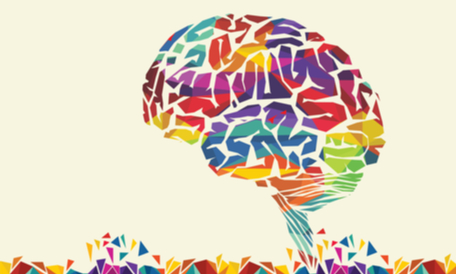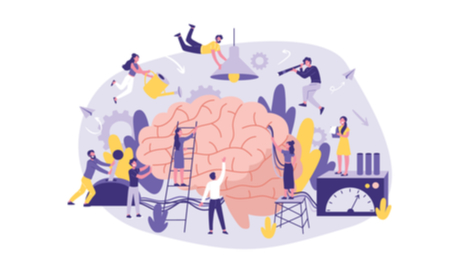What would you say if I told you that marketing is science? You might laugh and tell me “I’m pretty sure it belongs in the business sector” and you might be right. But today, we will talk about neuromarketing, and you will understand what I meant with my question.
Over these past few years, many studies and research have been made that benefited marketers and as some would say “changed lives”. With having the ability to affect, convince and even manipulate customer’s decisions, marketers have been able to build strong customer relationship and trust.
So, what is Neuromarketing and why does it sound like a medical term?
When you ask Wikipedia what neuromarketing is, it gives you this explanation: “Neuromarketing is a commercial marketing communication field that applies neuropsychology to market research, studying consumers’ sensorimotor, cognitive, and affective responses to marketing stimuli.”
Uh… what? If you want to read about neuromarketing but also understand it, then you’ve come to the right place – Brainspace.
Okay, so let’s get started.
What Is Neuromarketing?
In simple terms, it is the study of how a human brain replies to advertisement.
Neuromarketing, also sometimes called “consumer neuroscience”, is the study of human brain with the goal of predicting and even manipulating the consumer behavior and decision making. To get more into details, neuromarketing as its name states, has a lot to do with neural signals. These signals are measured in order to gain insights into the customer’s purchasing decisions, brand preferences, motivations and many more.
Some neuromarketing activities are:
- ERA – emotional response analysis which measures the emotional engagement.
- Brain scanning which scans and measures the neural activity.
- EEG or Functional MRI which helps understand what a person is thinking.
- Physiological tracking which measures the eye movement.
It is okay if you are still confused about what Neuromarketing is, I agree, it sounds a bit confusing. Here are 4 Neuromarketing examples for you to understand it better.
1- Colors Speak Louder Than Words.

It is no secret that the use of colors can have a great impact on user decisions. One way of explaining this is that colors can communicate in ways words can’t; in an emotional way. However, using colors isn’t only to evoke the emotional side of your customers, it is also used to meet their expectations for the products. For example, the color grey isn’t the best color you want to use for feminine hygiene products.
Here are some statistics for you!
- 85% of the people revealed that the primary reason of their purchasing decision is because of the colors of the product.
- Approximately 90% of impulse product purchasing decisions is based solely on the colors of the products.
- Using poor color choices and other inferior design choices oblige 52% of their users to leave their website and get this, NEVER RETURN!
To make this more interesting, did you know that every color you use influences the way your consumers perceive your products? Researchers have ascertained a strong link between behaviors and specific colors, For example:
- Blue – Comfort, Calmness, Peace, Tranquility, Responsibility, Intelligence, Trust.
Best fit for: Banks – A yoga studio – Medical institution. - Red – Love, Excitement, Passion, Danger, Anger, Confidence, Energy, Fire, Power.
Best fit for: Restaurants – Dating services – Sale at shopping centers. - Green – Professionalism, Freshness, Youth, wealth, Balance, Newness, Growth.
Best fit for: Eco friendly brands – Spa – Health services. - Purple – Royalty, Luxury, Wisdom, Mystery, Imagination, Spirituality, Nostalgia, exclusivity
Best fit for: Jewelry business – Beauty brands – Technology services. - Yellow – Appetite, Joy, Attention, Playfulness, Optimism, affordability, Cheerfulness.
Best fit for: Taxis – Businesses with young target audience – Food delivery companies. - White – Cleanliness, Purity, Simplicity, Honor, Coldness, Safety, Freshness, Blandness.
Best fit for: Ice cream vendor carts – Minimalist brands – Hospitals. - Black – Control, Power, Elegance, Formality, Mystique, Class, Seriousness, Intelligence.
Best fit for: Expensive products – Gyms – Occult goodies.
2- Always Judge A Product By Its Cover.

First impressions are very important, and what is the first thing you see when you look at its product? Its packaging! Marketers know the importance of packaging and with Neuromarketing, they have taken it to the next level!
According to Neuromarketing, to make your packaging more successful, there are four key human factors to focus on :
- Perception
- Cognition
- Appeal
- Decision
A study has been made that showed what consumers really thought about packages of some product. In this experiment, their responses were recorded as negative, positive, or neutral. After gathering insight, it was shown that people disliked shiny packages and had no reaction towards matte packages. This helped many companies as they redesigned their shiny packages in a way that meets their customer’s expectations.
3- Fast and Furious… I Mean Fast and Urgent.

This is not a secret anymore; even small businesses know that creating urgency increases sales. To understand how your customer behavior works and what they focus on, you have to understand how they think. One of the best and most relevant psychological ways to increase sales is urgency. Informing your customers that “This is the last piece” increases the fear of missing out on customers.
Some of the ways businesses use urgency are:
- Using deadlines.
- Mentioning scarcity.
- Writing time related phrases (Last chance, don’t miss out…)
- Having flash sales.
However, this isn’t the only way businesses used speed to increase customer satisfaction. For example, Paypal dedicated their focus on speed instead of security unlike other companies. After a study they conducted, they concluded that “convenience activated the brain more than security did.”
4- The Eyes Chico, They Lie.

Our eyes play an important role in our life, they are the windows to our brains, but that doesn’t mean they cannot be deceived. According to Neuromarketing “rules”, Advertisements that contain people, specially babies, usually have more influence on us.
Did you know? The using babies in advertisement is a very old technique, dated back to 1947!
They might be small and cute, but they for sure serve as an important factor in advertisement.
- Guide attention
- Create powerful emotions
- Convey the need for the product
Fun fact: researchers have found that during an advertisement, when a person looks at a specific place, the viewers will also look at the same place. Therefore, make sure the person in the advertisement is looking at your product!
To wrap it up, Neuromarketing has become an important advancement in the comprehension of the consumer, its behavior, and its decisions. Integrate Neuromarketing techniques into your advertising campaigns and see your results improve. It is important to mention that you need to be careful while using neuromarketing in order not to cross the line and remain ethical.
With Neuromarketing and digital marketing, who knows? Maybe one day you’ll rule the marketing world!



